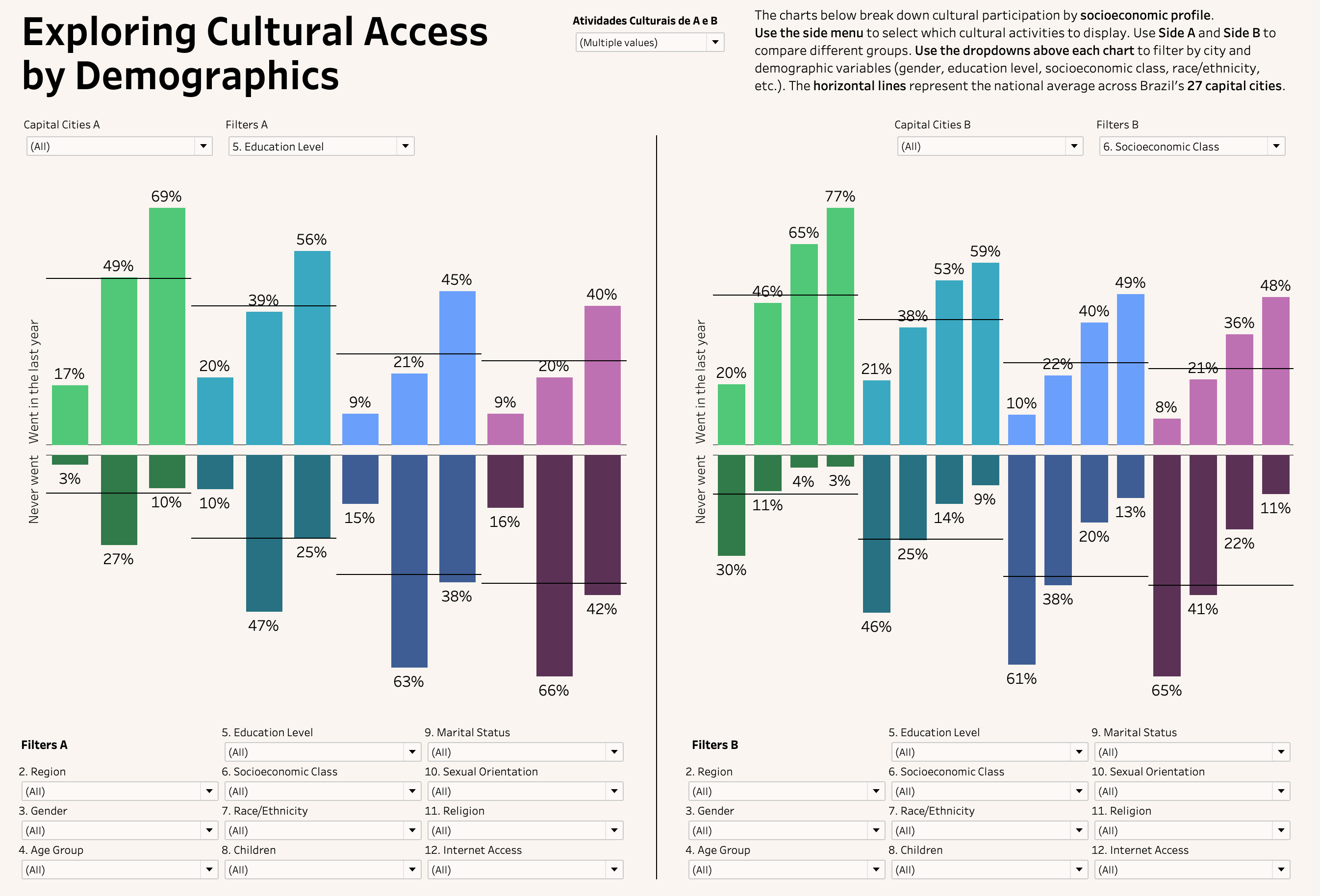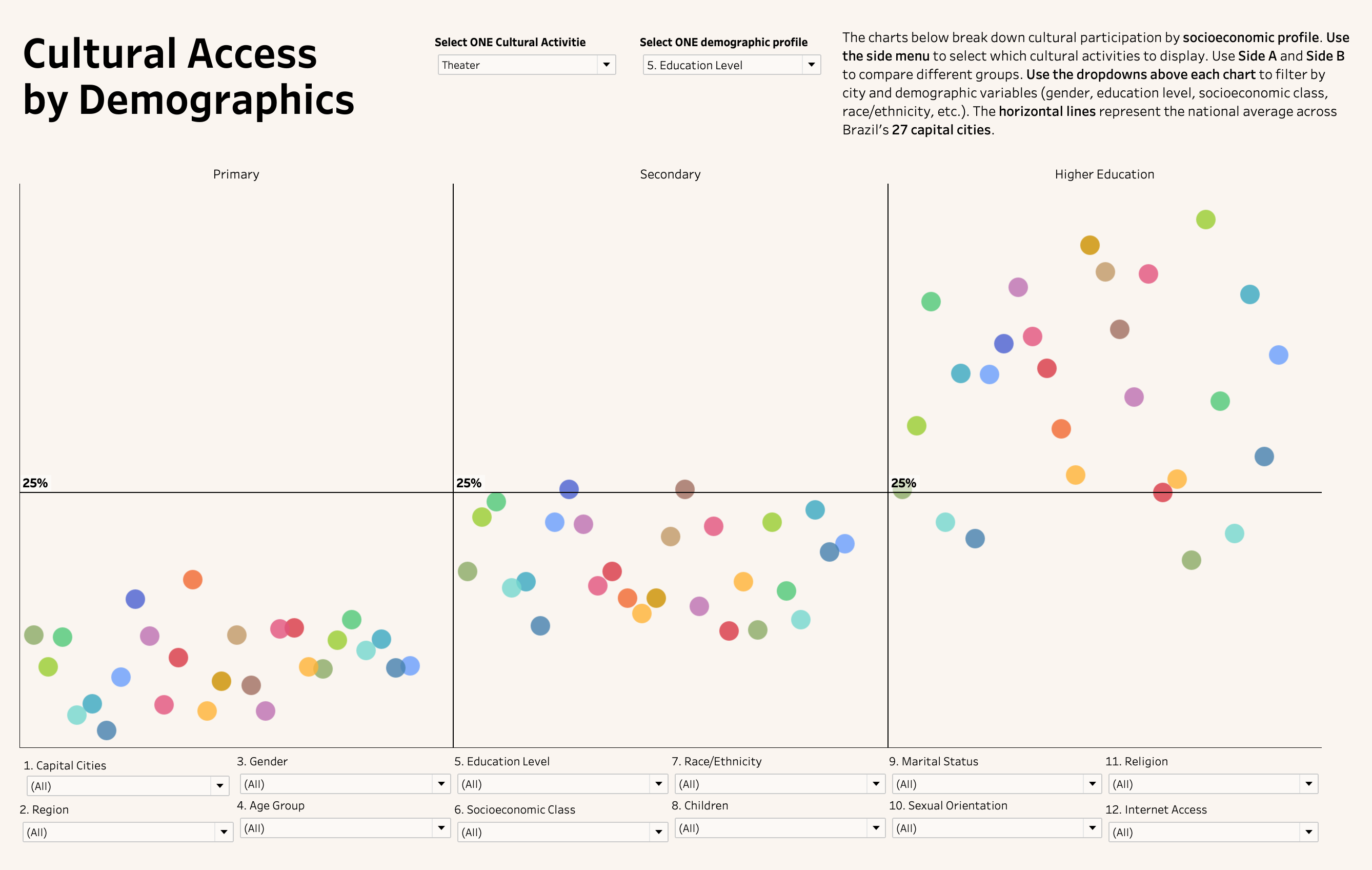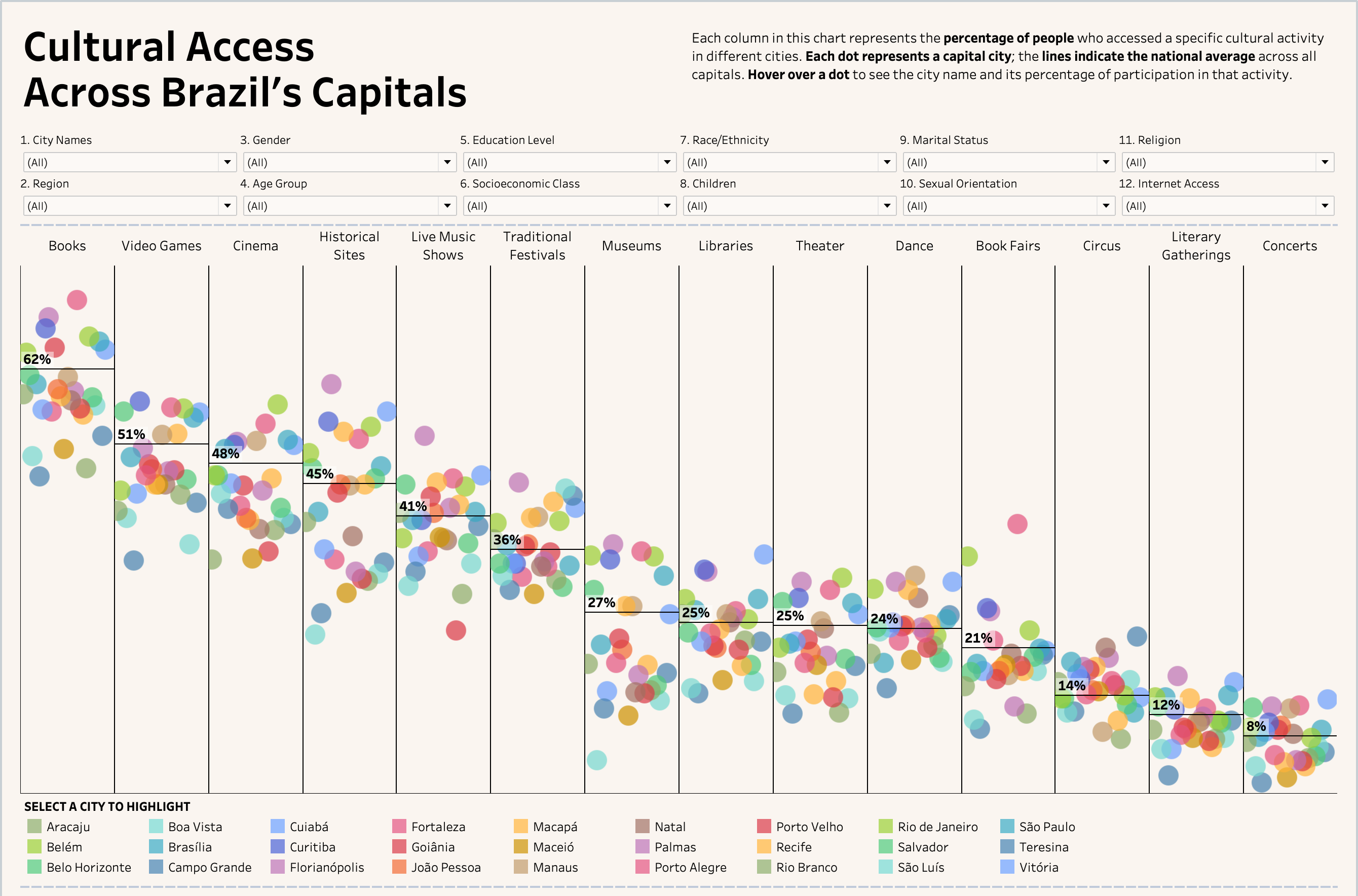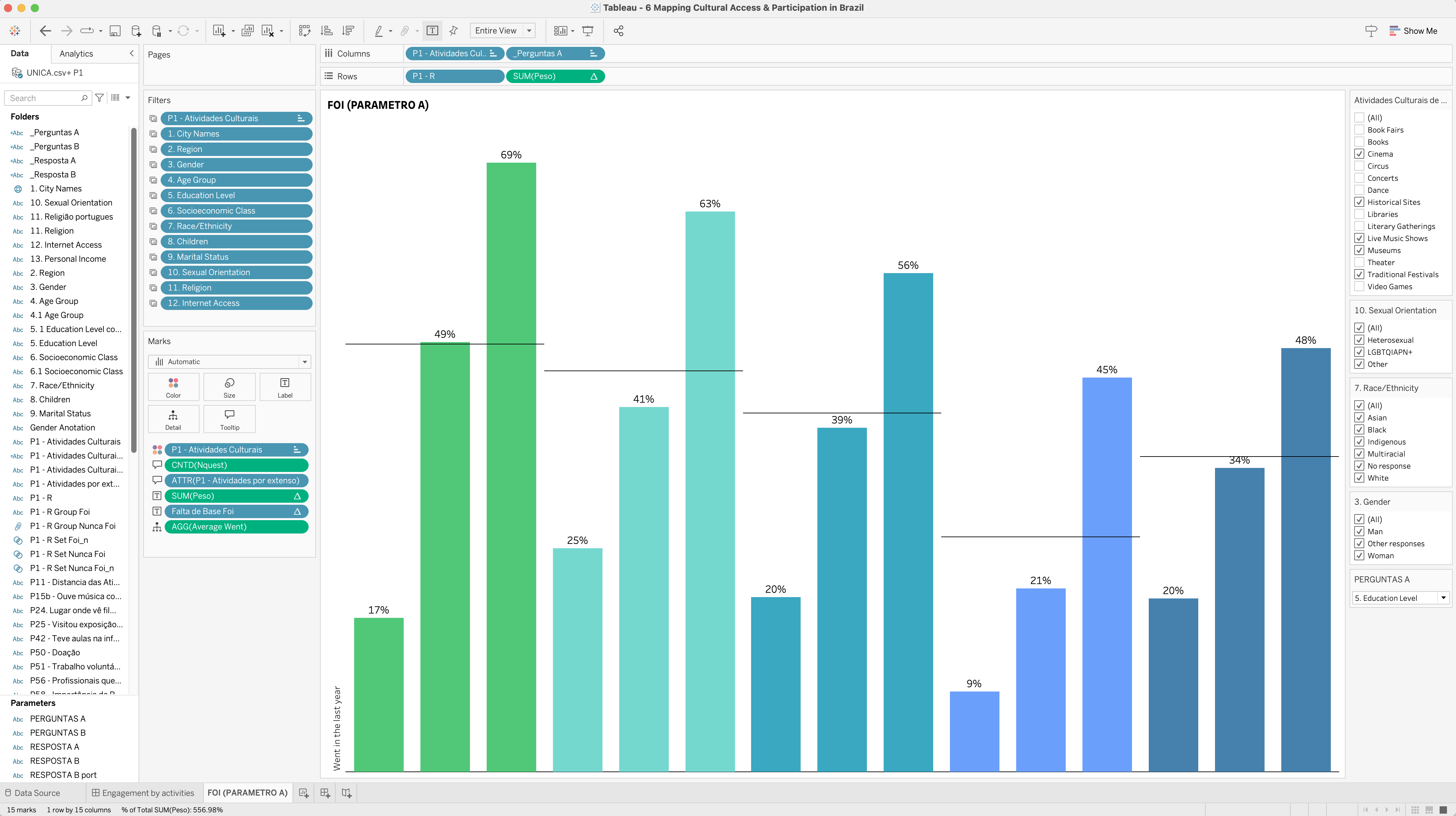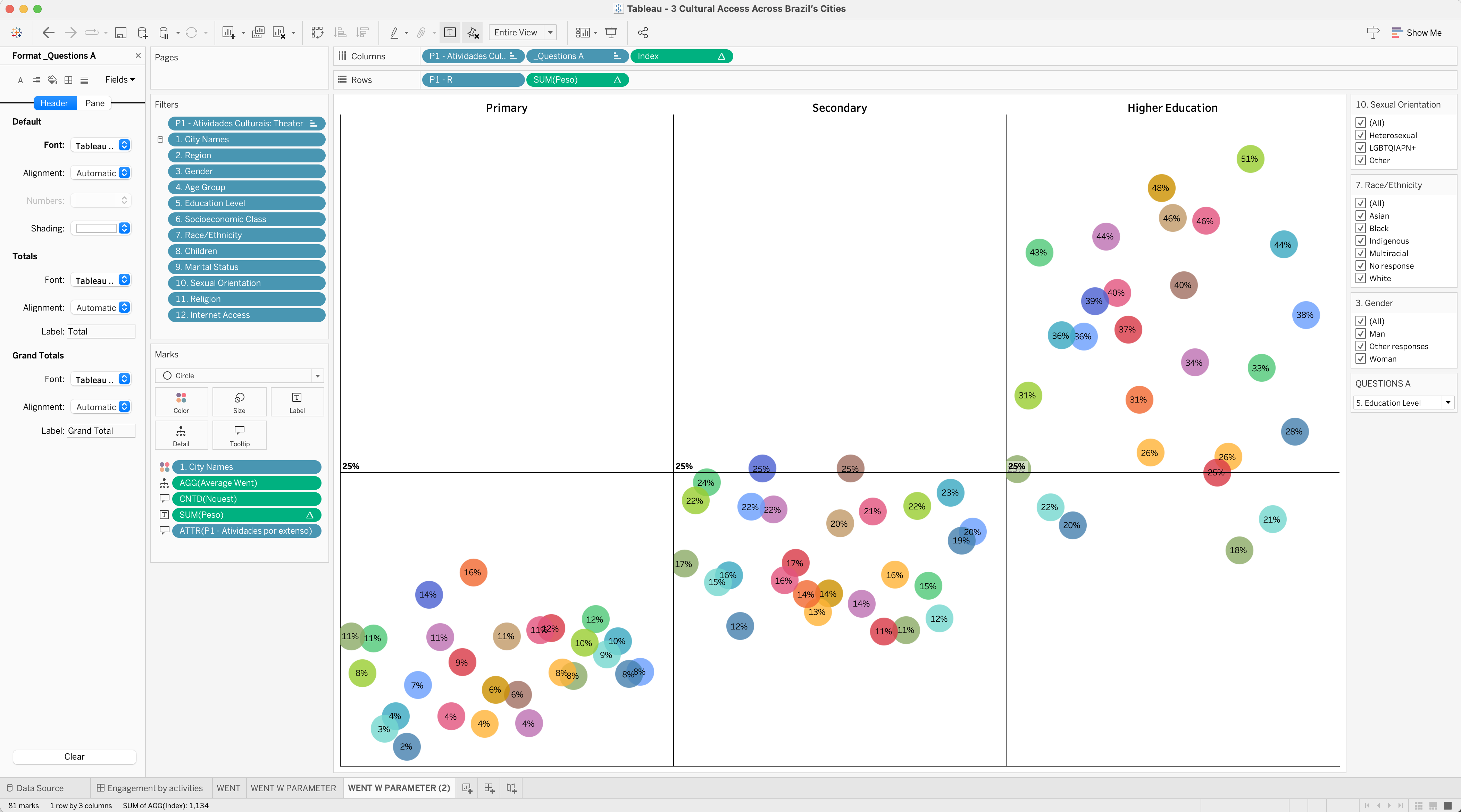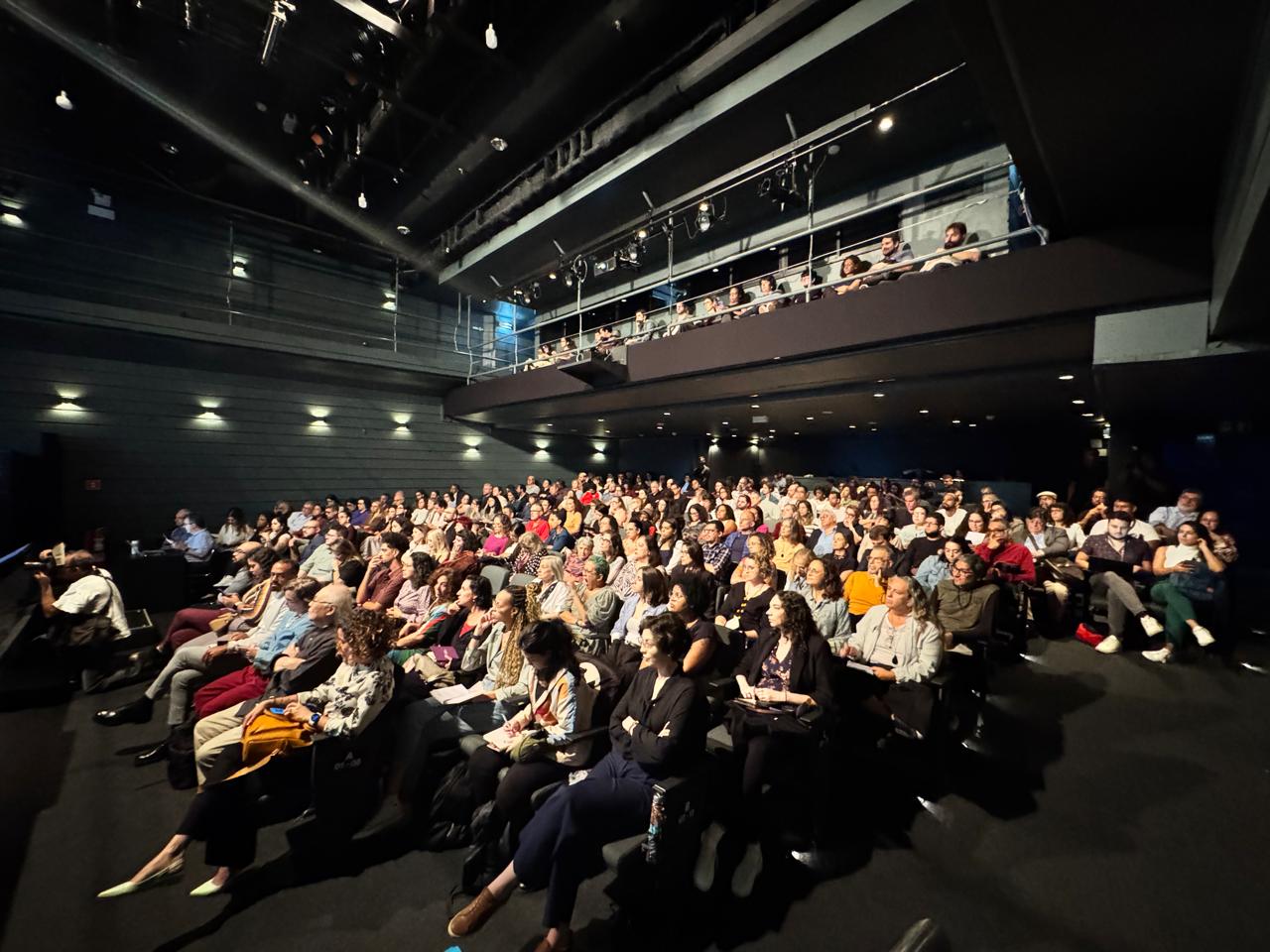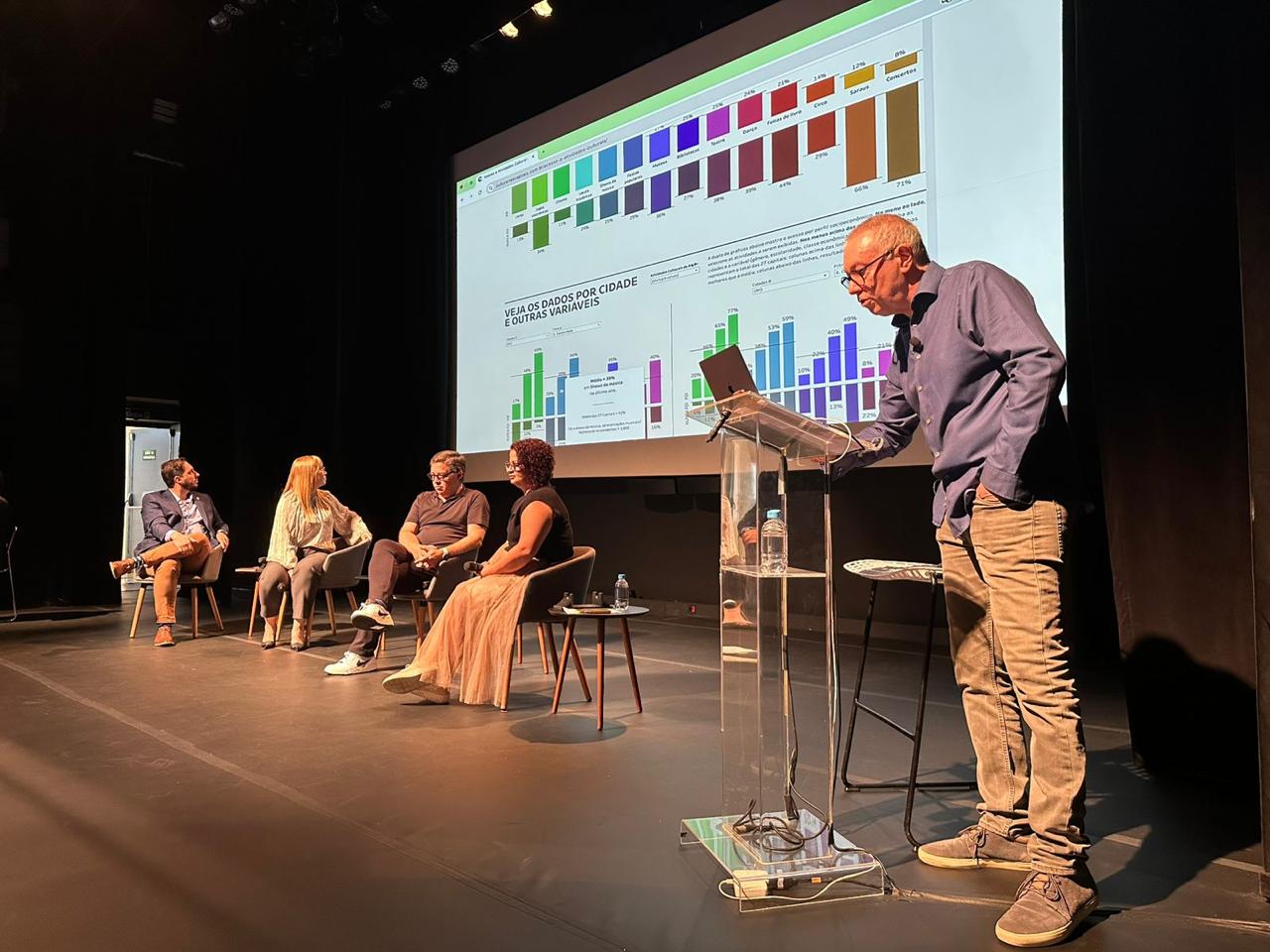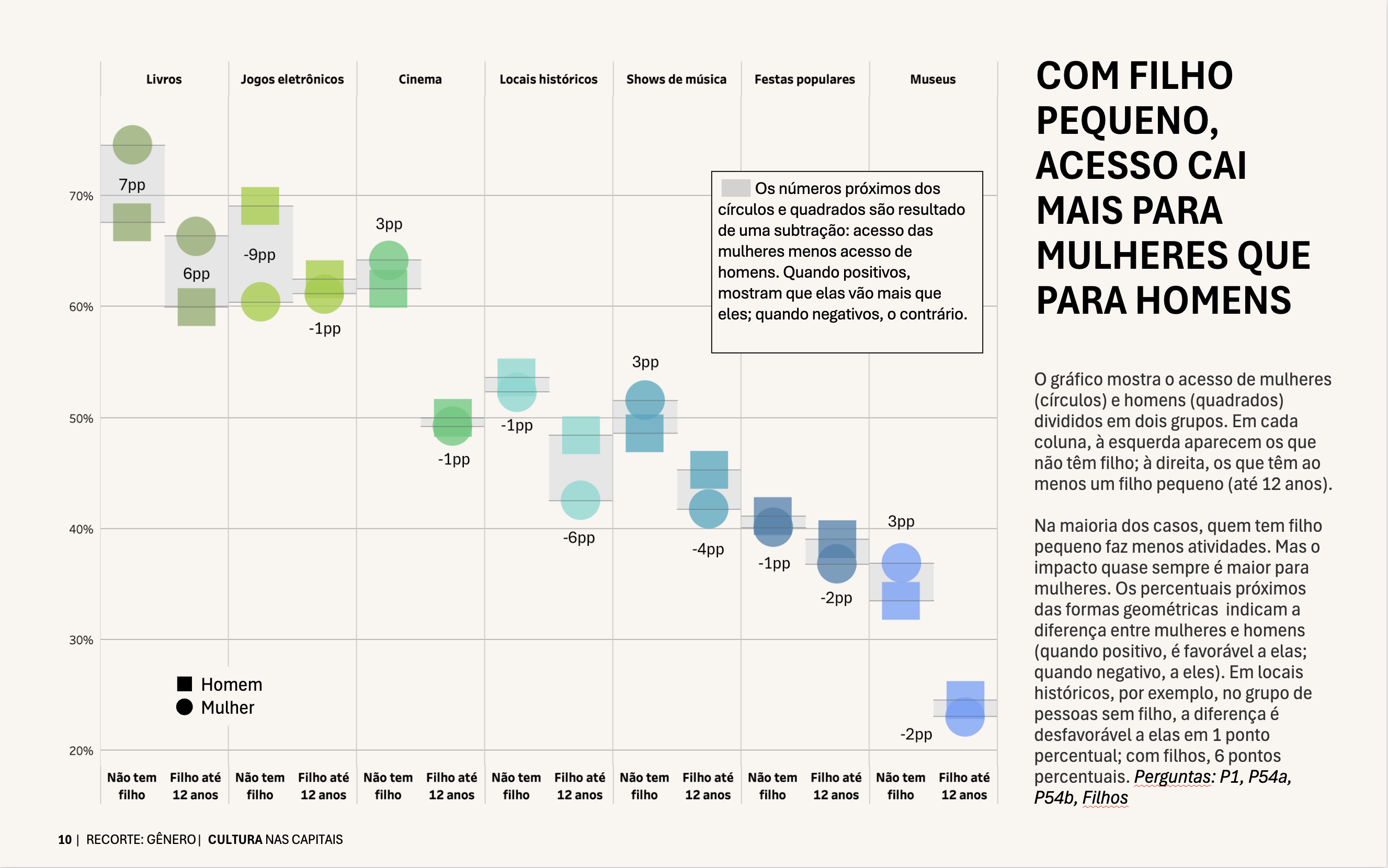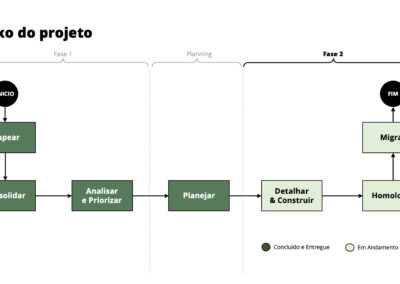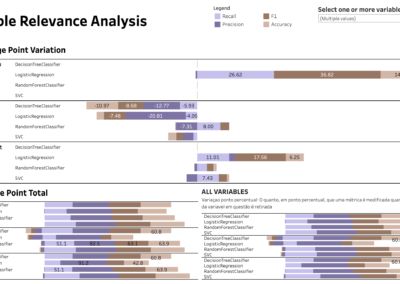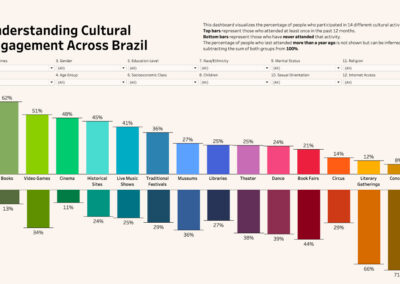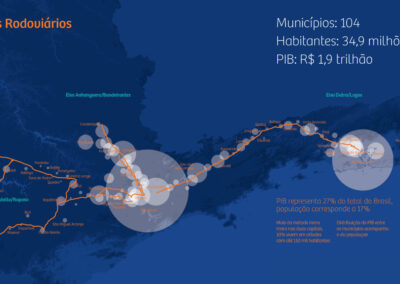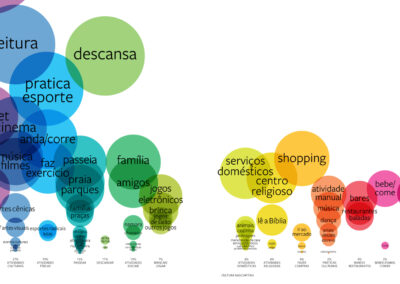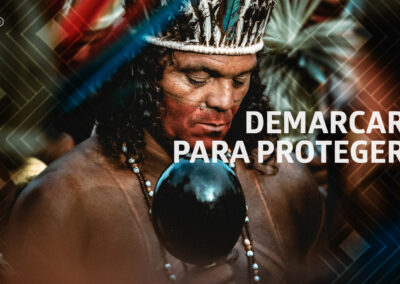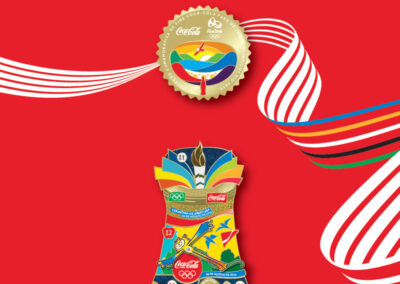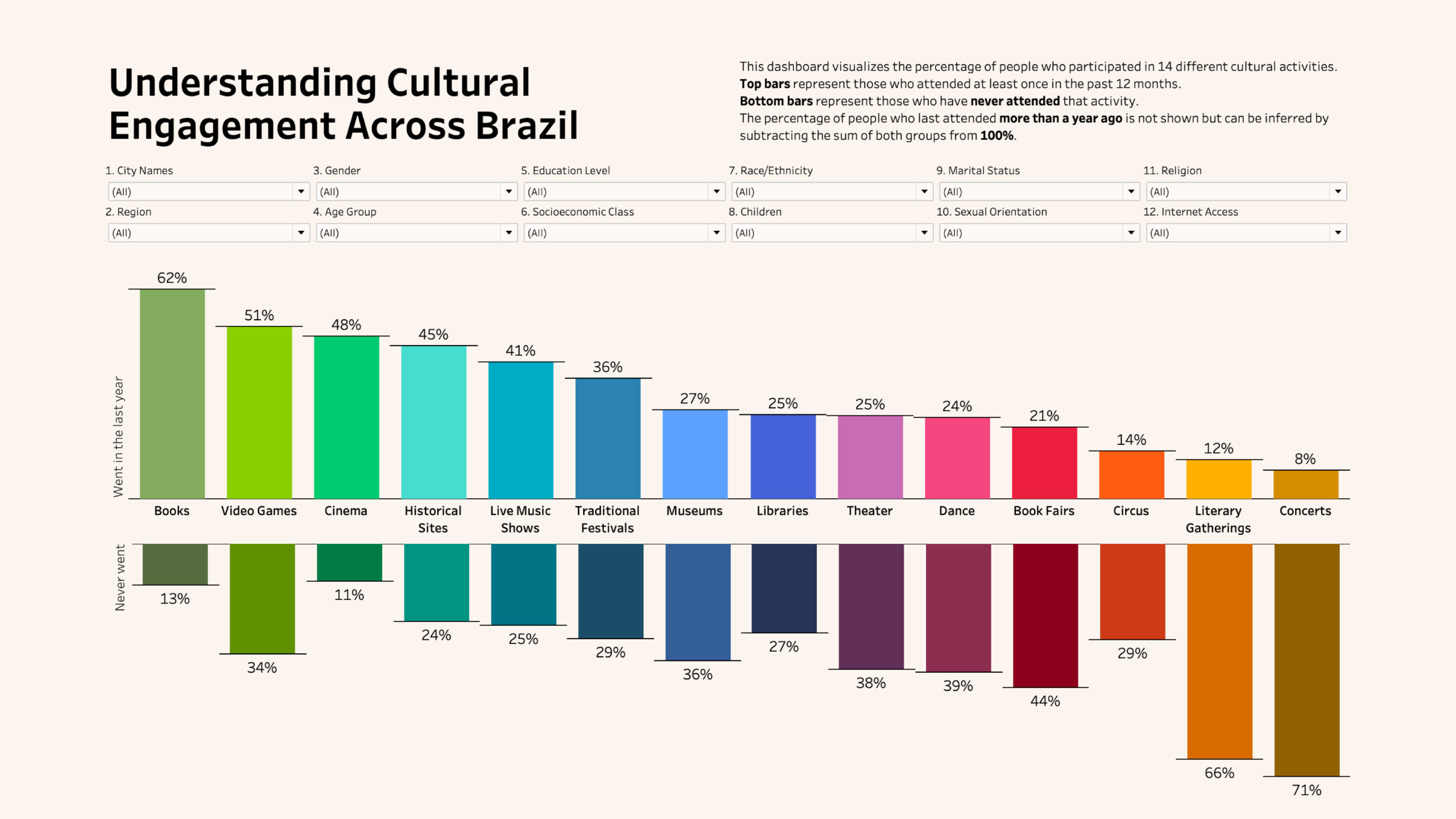
CHALLENGE
The largest cultural engagement survey ever conducted in Brazil set out to analyze audience participation, access barriers, and the role of socioeconomic factors in cultural consumption across all 27 Brazilian capitals. This ambitious study, based on 19,500 in-person interviews and nearly 500 data points per respondent, required a scalable and accessible data visualization system to serve researchers, policymakers, cultural institutions, and entrepreneurs. The challenge was to transform a massive dataset into clear, engaging, and actionable insights—both for public access and for in-depth academic and policy discussions.
ROLE
Data Visualization Designer, ETL, and Data Modeling
SOLUTION
To make this extensive dataset accessible and impactful, I developed a comprehensive data visualization system that combined ETL processes, data modeling, and interactive reporting. The first step was structuring the raw data, ensuring consistency and usability by refining thousands of data points for efficient analysis. With a focus on data storytelling, I designed interactive dashboards that allowed users to explore cultural habits across various dimensions, including region, economic class, education level, and accessibility.
Beyond the dashboards, the project required strategic information design to translate findings into compelling, easy-to-understand reports and presentations. These materials were tailored for public in-person seminars in all 27 capitals, fostering discussions on education, investment, and social disparities in Brazil’s cultural landscape.
IMPACT
This is the most comprehensive cultural survey ever conducted in Brazil, sparking nationwide discussions on public investment, cultural accessibility, and the intersection of culture with social and economic structures. The data presentations have filled auditoriums across the country, demonstrating a strong demand for insights into cultural engagement. Beyond live events, the survey’s findings remain accessible through downloadable reports and interactive dashboards, ensuring its influence extends far beyond its initial release. The project is already reshaping policy conversations and providing a critical resource for future cultural development initiatives.
